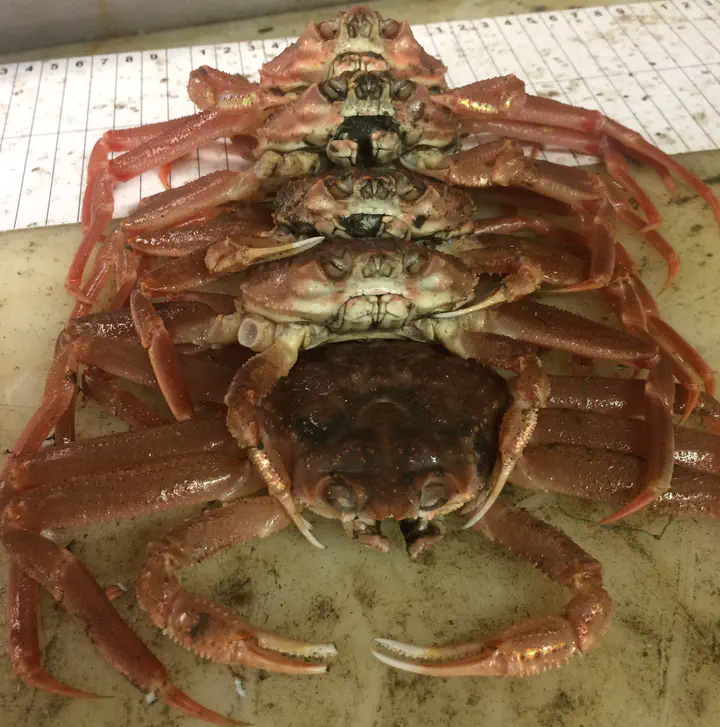Bering Sea Snow Crab SDMs

Bering Sea snow crab (Chionoecetes opilio) support a valuable commercial fishery and play an important ecosystem role as food for species such as Pacific cod. The population of snow crab in this region has declined in recent years, resulting in closures of the fishery. This decline followed a period of low sea ice concentrations and higher bottom temperatures in the Bering Sea, possibly implicating changing ocean conditions. To further investigate how both ocean conditions and biological interactions impact the distribution of snow crab, we aimed to develop sex- and maturity-specific species distribution models (SDMs). We explored the use of several SDM methods and parameterized models for use in short-term forecasts. These models incorporate both survey and fishery data, disease prevalence, predator abundance, and physical data. We found that boosted regression trees performed best when compared to generalized additive models, and that the relationships with the selected covariates varied by sex and maturity. For both sexes, distributions of less mature individuals were found to extend further northeast compared to mature individuals. For all stages and sexes, temperatures above approximately 3°C had a negative effect on abundance. However, in cases where winter ice concentrations were high, temperatures below 0°C had a negative effect on legal-sized male snow crab abundance. Earlier maturity stages had peaks in abundance at shallower depths than later stages and in all cases, smaller grain sizes had a positive effect on abundance. Our results illustrate the value of specifying different life stages when modeling species distributions.